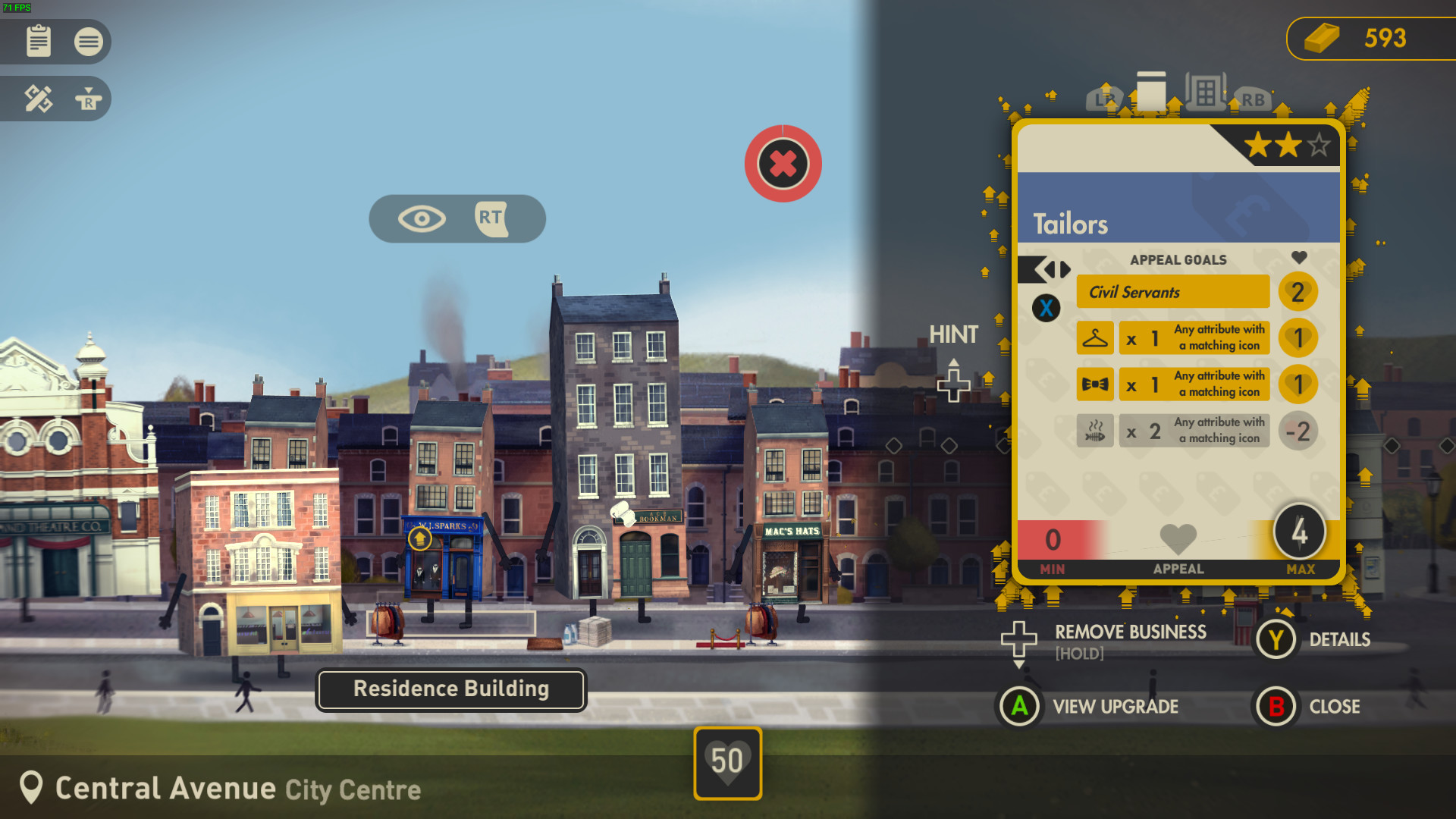
Building games are, to most of us, part of our childhood. For us, time spent dealing with the small details of a city is time well spent, but not all building games are strategy-based behemoths where you care about your resources. Yes, going the min-maxing route is okay, but did you know that buildings have feelings too? This is a philosophical statement—and it will probably make you think about all buildings around you—but what does it mean in the context of this game?
Yes, I’m a House… And Yes, I Can Talk

Buildings Have Feelings Too is a strategy game that tries to be different in its approach. Our objective is to build an efficient neighborhood where all buildings can live together in harmony. That means some old buildings will be able to live a second life, hopefully now being more useful and visually pleasing than before, but it all ultimately depends on us. Where should they be allocated? What's their new purpose? Do they like being part of this environment? The first thing you'll notice is how cute it looks, but then you'll start to see that everything plays slowlier than you may think. This is a game that encourages you to stop and stare, then decide what and where to build... oh, but not everyone will like that!
All characters are talking buildings with their own stories and needs. This is a very interesting concept for a strategy game... or any game, to be honest. Sadly, instead of making you more invested, it totally ruins the flow of the game. Dealing with these buildings' requirements is not easy nor fun, and most of the time, you'll find yourself solving a puzzle only to realize you really didn't solve it and you now have more problems than before. In other games, thinking outside of the box and coming out with your own original ideas would be something to applaud; here, however, could be the difference between being stuck forever or being able to move forward until the next puzzle...
Buildings Have Feelings Too is unforgiving. In fact, it never really makes an effort to teach you how to play or, more importantly, how to have fun.
Building Needs Strategy and Planification
It took us a little while to get used to this game. It's not your typical building sim, that's for sure, but even the buildings' requirements are challenging. If you don't know what you're doing, you could end up lacking resources (bricks, basically), unable to keep playing. If you at least understand the basics, then it's a matter of time before you learn how to keep your bricks coming. That's something weird about Buildings Have Feelings Too: getting enough resources could be too easy or too difficult, but there's no middle ground.
These Buildings May Have Feelings, but This Game Is Lacking a Soul...

Buildings Have Feelings Too is not a game for us, and this also applies to 95% of video game players out there, probably. Although it certainly looks beautiful, the gameplay is too uninviting to make you care about it, and everything feels too difficult for all the wrong reasons (you can't manually save, for example). On top of things, the PC version comes with several bugs and messy controls that make it almost impossible to comfortably navigate the menus, either with a controller or just using a keyboard and mouse.
On paper, Buildings Have Feelings Too is a fresh take on the building simulation genre, a game that focuses on the reasons why you do things instead of instinctively forcing you to hoard resources and money. It helps that all buildings are charming characters with their own backgrounds, but that's not enough. In reality, we're talking about a dull game that fails at being fun...
Final Thoughts
If you enjoy puzzle games where patience is always the answer, then you may like Buildings Have Feelings Too. It's actually a good game, and it totally feels like a niche board game—that one that's too niche you never find people to play with. Good thing this is a single-player experience!
If you were expecting a charming, casual video game about little houses and their little feelings... well, there's nothing here for you.

